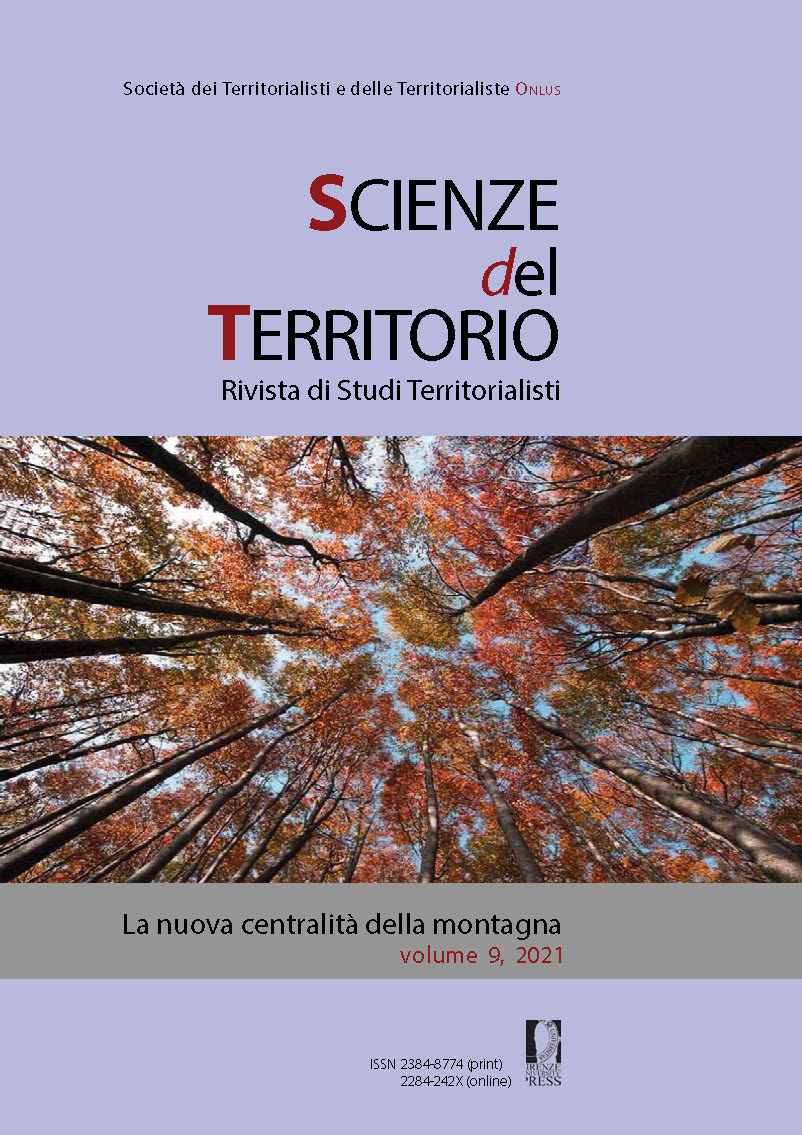La centralità della montagna in una inedita forma di urbanità: una controstoria per nutrire la nostra immaginazione
Published 2020-12-25
Keywords
- urban,
- mountains,
- counter-history,
- genealogy,
- imagination
How to Cite
Abstract
The article stems from an awareness of the fact that current models of organisation of the territory are undergoing great changes and that the interpretative categories we normally use for them no longer suffice to express the scope of transformations underway. It attempts to contradict the impression that the concept of urban must traditionally be associated with an idea of city as a centralised, delimited and circumscribed form. It does so, following in the footsteps of Scott and Soja, by proposing the embryos of a counter-history, illustrated by some significant moments, aimed at showing how the very idea of urban has created diverse spatial organisms along history, in which, notwithstanding the urban/rural dichotomy, even the mountains have sometimes taken on a role of great centrality. In observing the familiar connection between such land uses and the numerous contemporary signs showing us that a ‘new loving current’ appears to be binding the mountains to the cities, the article, drawing on the proposed genealogy, invites us to reappraise these territories no longer as external and peripheral but rather as an integral part of an extended, polyphonic city; the expression, therefore, of a new relationship of co-belonging between man and nature wherein – in the alternation of densification and gaps, slowness and speed, deserted spots and high-density nodes – even silences may finally be listened to, and the mountains acquire unprecedented centrality.


